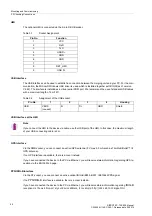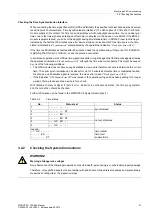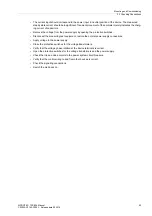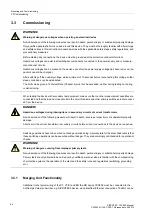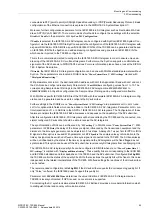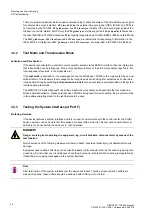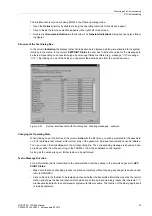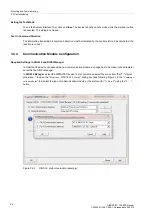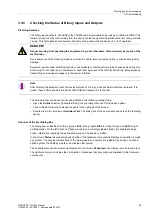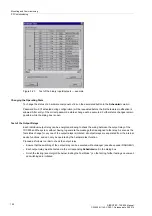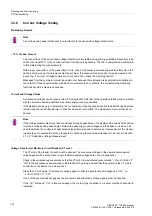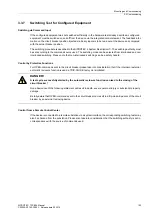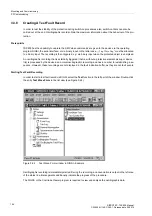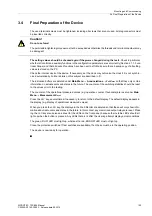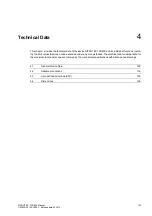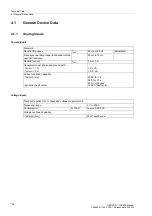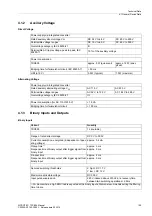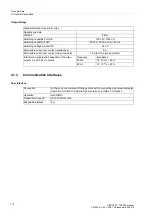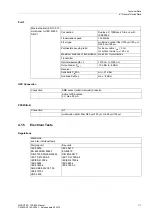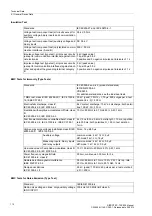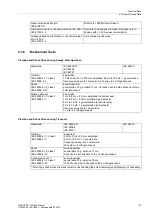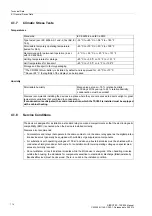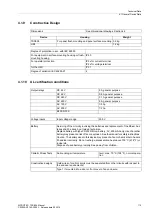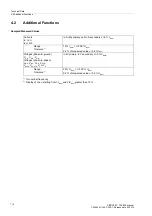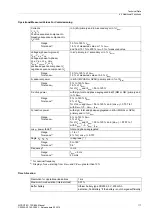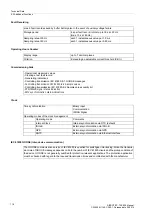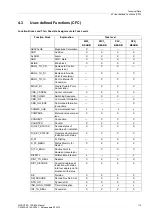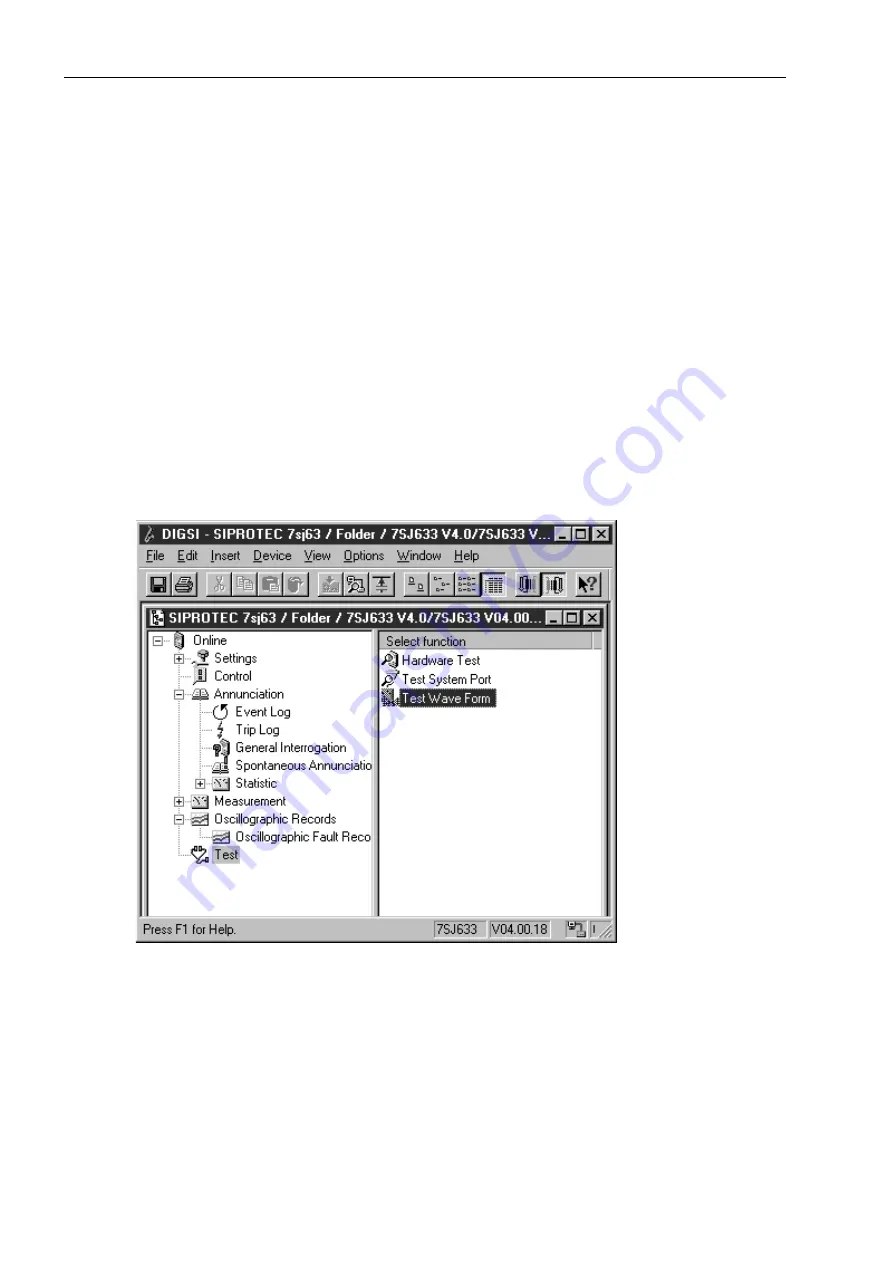
Mounting and Commissioning
3.3 Commissioning
SIPROTEC, 7SC805, Manual
C53000-G1140-C380-1, Release date 05.2014
104
3.3.8
Creating A Test Fault Record
In order to test the stability of the protection during switch-on procedures also, switch-on trials can also be
carried out at the end. Oscillographic records obtain the maximum information about the behaviour of the pro-
tection.
Prerequisite
7SC805 has the capability to capture the SMV when commands are given to the device via the operating
program DIGSI, the serial interface, or via binary input. In the latter case,
„>Trig.Wave.Cap.“
must be allocated
to a binary input. The recording is then triggered, e.g. via binary input when the protected object is energized.
An oscillographic recording that is externally triggered (that is, without a protective element pickup or device
trip) is processed by the device as a normal oscillographic recording, and has a number for establishing a se-
quence. However, these recordings are not displayed in the fault indication buffer, as they are not fault events.
Starting Test Fault Recording
In order to start a test fault record via DIGSI, select the
Test
function in the left part of the window. Double-click
the entry
Test Wave Form
in the list view (see Figure 3-24).
Figure 3-24
Test Wave Form window in DIGSI - Example
Oscillographic recording is immediately started. During the recording, an annunciation is output in the left area
of the status line. Bar segments additionally indicate the progress of the procedure.
The SIGRA or the Comtrade Viewer program is required to view and analyze the oscillographic data.

